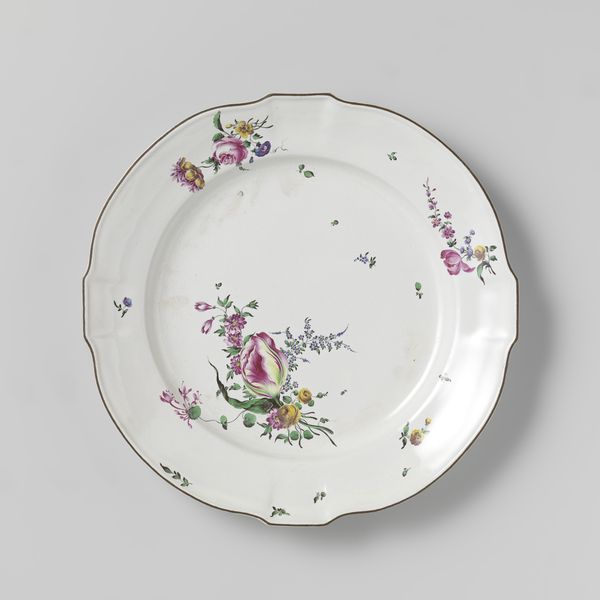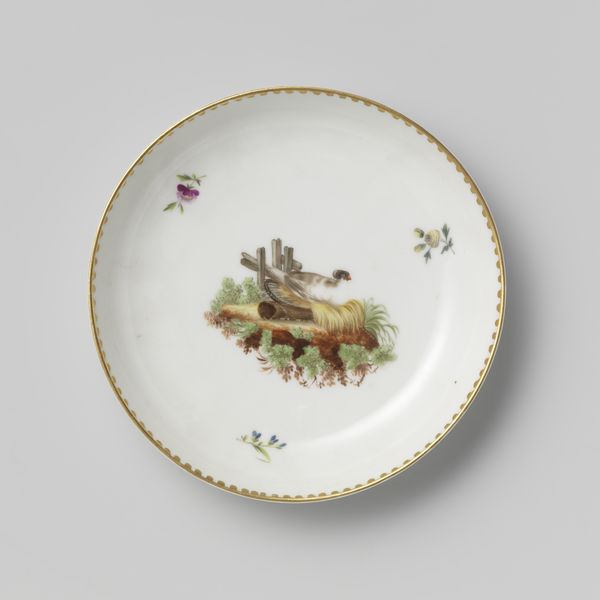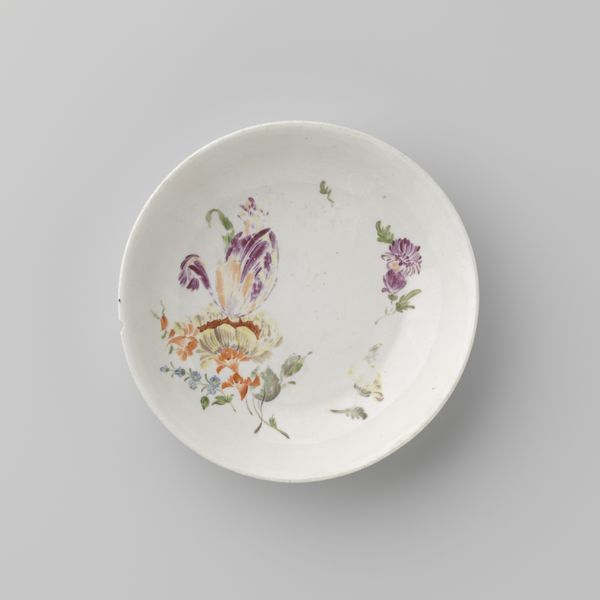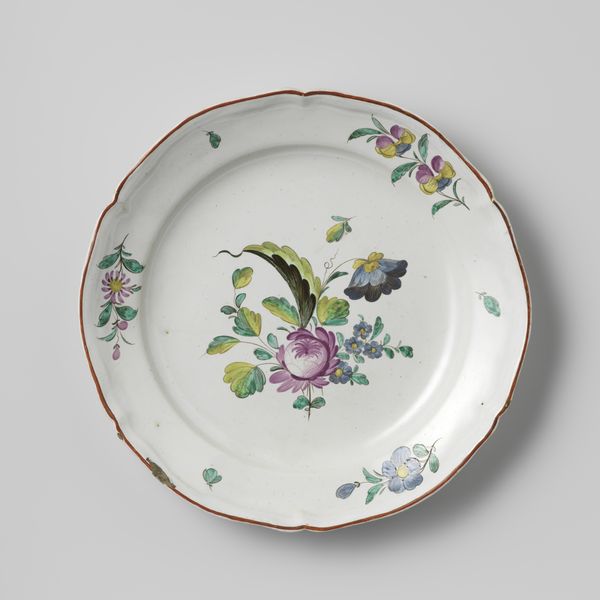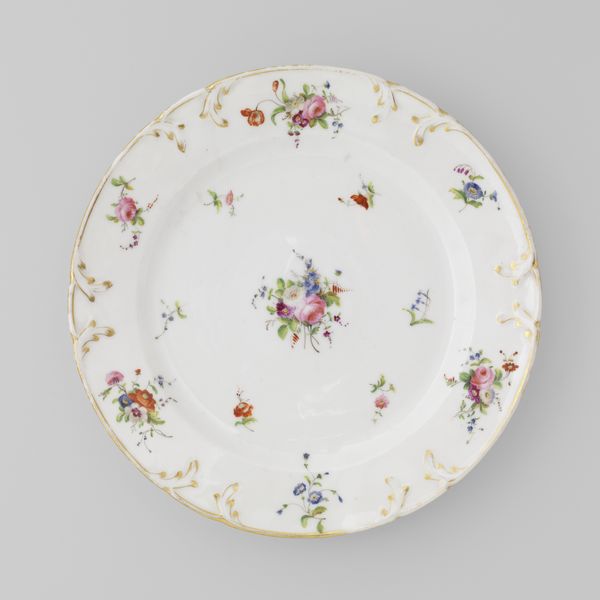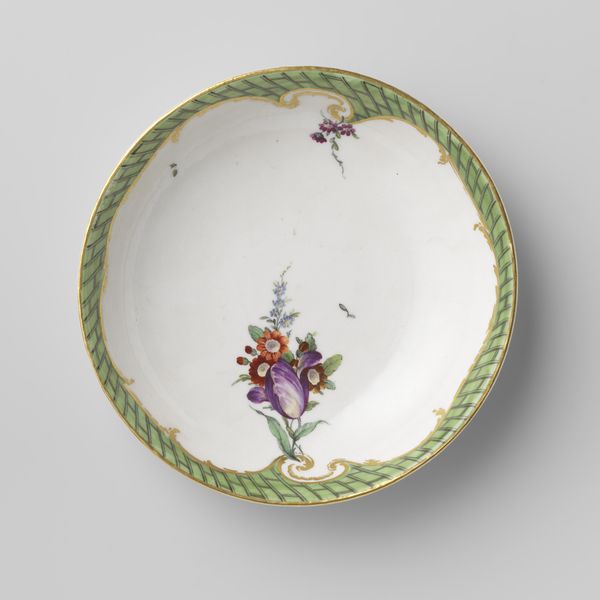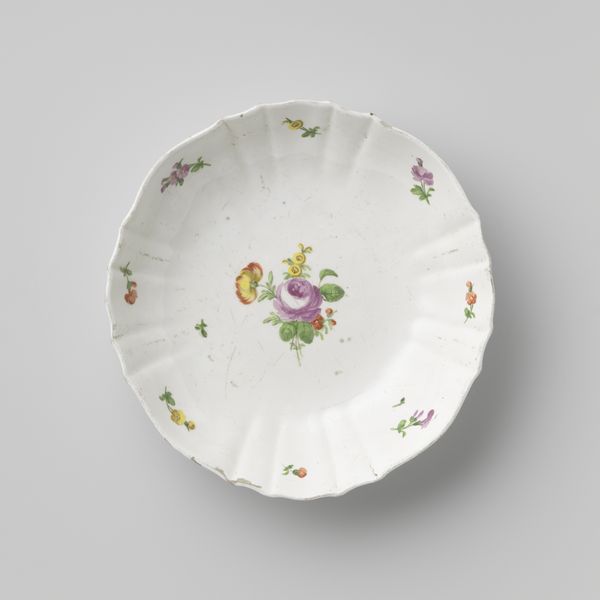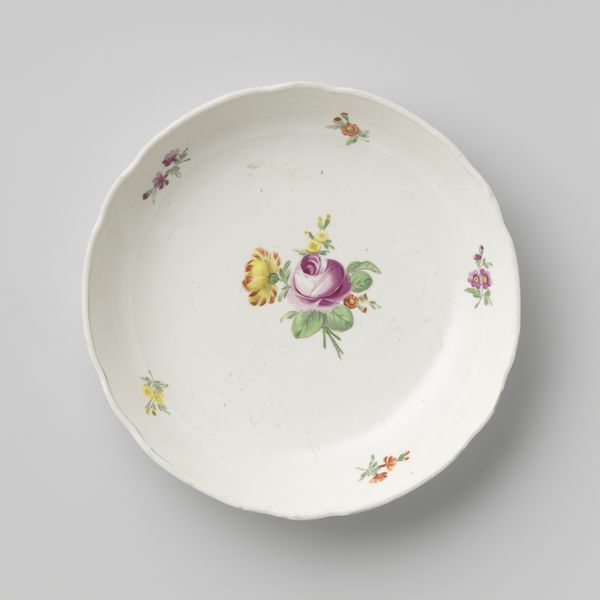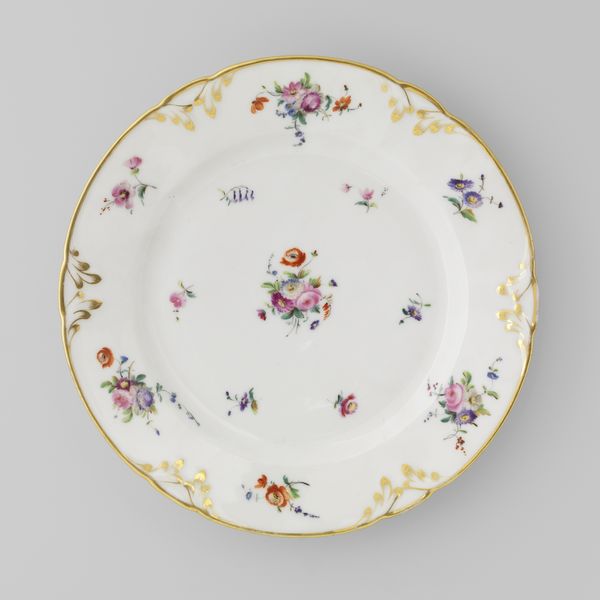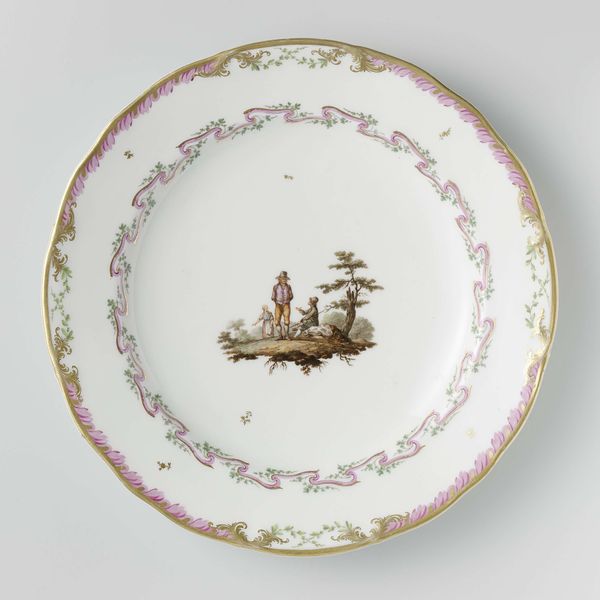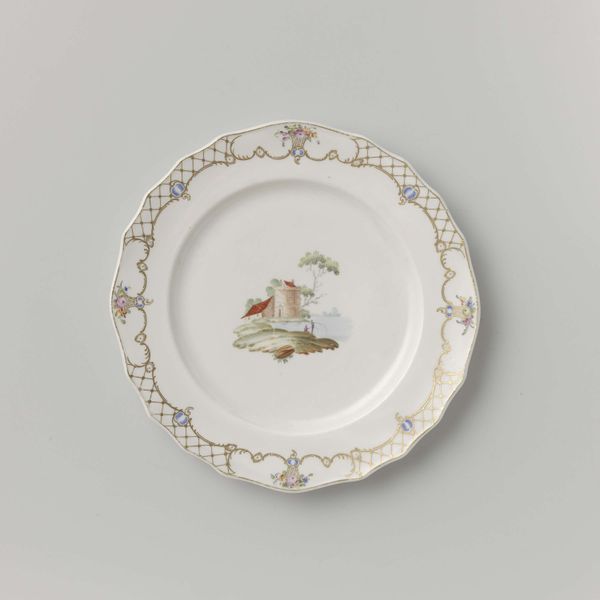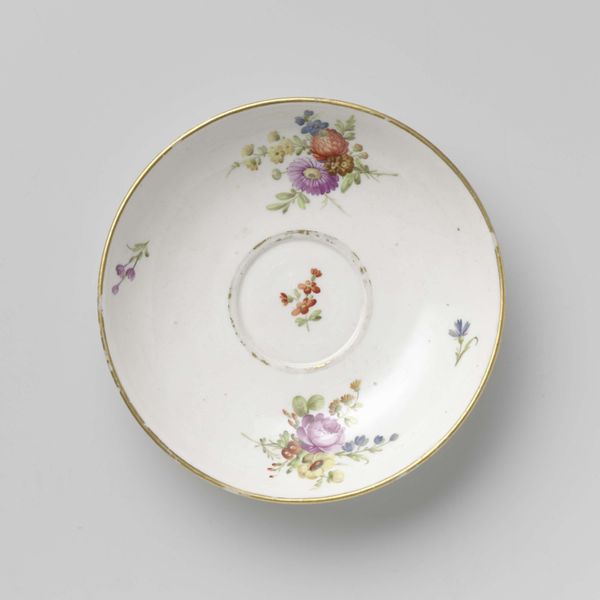
painting, ceramic
#
painting
#
ceramic
#
stoneware
#
folk-art
#
orientalism
#
ceramic
#
decorative-art
Dimensions: height 4 cm, diameter 24 cm, diameter 12.1 cm
Copyright: Rijks Museum: Open Domain
Editor: Here we have a ceramic plate, dating from around 1765 to 1799, titled "Plate with a tiger near flowering plants" and made by Geminiano Cozzi. The colors are delicate, but something about the tiger seems out of place in a strange yet appealing way. How do you interpret this work, looking at the broader context of imagery? Curator: It is certainly an interesting juxtaposition! The tiger, a potent symbol of power and ferocity, is placed amongst these delicate flowering plants, immediately evoking a sense of controlled energy. But look closer: the style suggests Orientalism, a Western interpretation of East Asian motifs. Do you notice any attempt by the artist to borrow from Asian symbolism here? Editor: I do. The way the plants are depicted looks stylized and… well, maybe not realistically "tiger-like". It seems filtered through a European lens, with a decorative rather than accurate intention. Curator: Precisely. So the tiger isn't necessarily about raw power itself, but more an echo of a Western fascination with the "exotic East." It becomes a symbol of an imagined Orient, imbued with a sense of luxury and the wild, tamed and displayed for a European audience. What feelings are evoked for you through the flowers versus the tiger? Editor: I get the sense of this idealized scene or landscape. What do you mean about the "wild?" Curator: The wild would encompass elements that could appear uncontrollable, untamed or foreign to Western audiences; this would be the animal. When put in this context, it makes sense from both a stylistic and marketing lens of cultural borrowing. Editor: I see that now! It is like the artist is playing with expectations and fantasies surrounding Asian cultures for his audience. Thanks for clarifying the nuances of symbolism within the context of cultural exchange. Curator: Indeed, recognizing those layers enriches our experience and understanding of the art; the emotional connections that occur when people look at something exotic versus native for themselves are a prime part of art exploration.
Comments
No comments
Be the first to comment and join the conversation on the ultimate creative platform.
